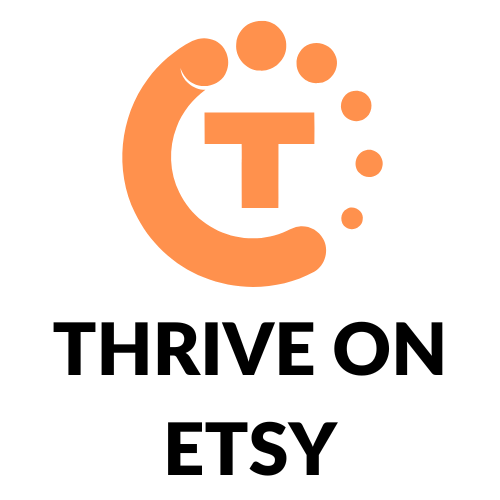Starting a blog for your Etsy shop can be a great way to increase your online presence, attract more customers, and showcase your products. However, for many Etsy sellers, the thought of starting a blog can be overwhelming. Fortunately, there are many resources available to help make the process easier and more manageable.
One important step in starting a blog for your Etsy shop is selecting a blogging platform. WordPress is a popular choice among bloggers because it is user-friendly and customizable. Additionally, it offers many features that can help you create a professional-looking blog.
Another important consideration is choosing a domain name for your blog. Ideally, your domain name should be similar to your Etsy shop name or reflect the products you sell. Once you have a domain name, you will need to choose a hosting provider and set up your blog. With the right tools and guidance, starting a blog for your Etsy shop can be a rewarding and exciting experience.
Why Start a Blog for Your Etsy Shop

Starting a blog for your Etsy shop is a wise decision. It can help you to promote your shop, connect with your customers, and build your brand. A blog can also help you to establish yourself as an expert in your niche, which can lead to increased sales and a loyal customer base.
By regularly updating your blog with informative and engaging content, you can keep your customers informed about your latest products, promotions, and events. You can also share your knowledge and expertise about your craft, which can help to build trust and credibility with your audience.
Furthermore, a blog can help to improve your search engine rankings, which can lead to more traffic and sales for your shop. By using relevant keywords in your blog posts and linking back to your shop, you can increase your visibility on search engines like Google.
Choosing a Blogging Platform

Choosing the right blogging platform is an important step in starting a blog for your Etsy shop. There are many options to choose from, both free and paid. Here are some of the most popular platforms to consider:
Free Platforms
For those on a tight budget, free blogging platforms are a great option. These platforms offer basic features and are easy to use, making them ideal for beginners. Here are some of the most popular free platforms:
- Blogger: This is one of the most accessible blog-hosting sites because it’s free and user-friendly. If you’re wary of the technical aspects of blogging, Blogger’s drag-and-drop interface makes it easy to create and publish content.
- WordPress.com: This is another free platform that offers a range of features, including customizable designs, social media integration, and built-in SEO tools. However, the free version of WordPress.com does have some limitations, such as a lack of control over your site’s design and the inability to use custom themes or plugins.
- Tumblr: This microblogging platform is ideal for those who want to share short-form content, such as photos, videos, and quotes. It’s easy to use and has a strong social media component, making it a great option for those who want to build a following quickly.
Paid Platforms
If you’re willing to invest some money into your blog, paid platforms offer more advanced features and greater customization options. Here are some of the most popular paid platforms:
| Platform | Price | Features |
| WordPress.org | Free (with paid hosting) | Full control over your site’s design and functionality, access to thousands of themes and plugins, built-in SEO tools, and the ability to monetize your site. |
| Squarespace | Starting at $12/month | Beautiful, customizable designs, built-in SEO tools, e-commerce functionality, and 24/7 customer support. |
| Wix | Starting at $14/month | Drag-and-drop website builder, customizable designs, e-commerce functionality, and a range of marketing tools. |
Ultimately, the platform you choose will depend on your budget, technical expertise, and the features you require. It’s important to do your research and choose a platform that will meet your needs both now and in the future.
Setting Up Your Blog

Selecting a Domain Name
When starting a blog for your Etsy shop, the first step is selecting a domain name. Your domain name is your web address and should be easy to remember and relevant to your brand. Consider using your shop name, or a variation of it, as your domain name to make it easy for customers to find you online.
Choosing a Hosting Provider
After selecting a domain name, the next step is choosing a hosting provider. A hosting provider is a company that will store your blog on their servers and make it accessible on the internet. When selecting a hosting provider, consider factors such as cost, reliability, and customer support.
Installing WordPress
Once you have selected a hosting provider, the next step is installing WordPress. WordPress is a content management system that makes it easy to create and manage your blog. Most hosting providers offer a one-click installation of WordPress, making it easy for even beginners to get started.
Customizing Your Blog Design
After installing WordPress, the next step is customizing your blog design. WordPress offers a wide range of customizable themes that you can use to create a unique look for your blog. You can also customize your blog further by adding plugins, widgets, and other features. When customizing your blog design, keep in mind your brand and the type of content you will be sharing on your blog. Setting up a blog for your Etsy shop may seem daunting at first, but with the right tools and resources, it can be a simple and rewarding process. By selecting a domain name, choosing a hosting provider, installing WordPress, and customizing your blog design, you can create a professional and engaging blog that will help grow your business.
Creating Content for Your Blog

Creating content for your blog is a crucial step in building a successful blog for your Etsy shop. By providing valuable and engaging content, you can attract and retain readers, establish a loyal following, and ultimately drive more traffic and sales to your shop.
Identifying Your Target Audience
The first step in creating content for your blog is identifying your target audience. Who are your ideal readers? What are their interests, needs, and pain points? Understanding your target audience will help you create content that resonates with them and provides value.
Brainstorming Blog Post Ideas
Once you have identified your target audience, the next step is to brainstorm blog post ideas. Start by researching what other content brands similar to yours are creating to get your creative juices flowing. You can also use tools like Google Trends, BuzzSumo, and Answer the Public to find popular topics and questions related to your niche.
Make a list of potential blog post ideas and prioritize them based on relevance, interest, and potential impact on your readers. Don’t be afraid to experiment with different formats, such as how-to guides, listicles, case studies, interviews, and opinion pieces.
Writing High-Quality Blog Posts
When it comes to writing high-quality blog posts, there are a few best practices to keep in mind. First, aim for a conversational tone that is easy to read and understand. Use short sentences, simple words, and active voice to keep your readers engaged.
Second, structure your blog posts in a way that is easy to follow and digest. Use headings, subheadings, bullet points, and images to break up the text and make it more visually appealing.
Third, provide value to your readers by answering their questions, solving their problems, and offering actionable advice. Use examples, case studies, and personal anecdotes to illustrate your points and make your content more relatable.
Optimizing Your Content for SEO
Finally, don’t forget to optimize your content for SEO to increase your visibility and reach. Use relevant keywords in your blog post titles, headings, meta descriptions, and throughout your content. Use alt tags to describe your images and include internal and external links to other relevant content.
Remember, creating high-quality content for your blog is a long-term strategy that requires consistency, patience, and dedication. By following these best practices and providing value to your readers, you can establish yourself as an authority in your niche and drive more traffic and sales to your Etsy shop.
Promoting Your Blog

After creating a blog for your Etsy shop, it is essential to promote it to attract more visitors and potential customers. Here are some effective ways to promote your blog:
Social Media Marketing
Social media platforms such as Facebook, Instagram, Twitter, and Pinterest are great tools to promote your blog. Share your blog posts on your social media accounts and encourage your followers to read and share them. Use relevant hashtags to increase your visibility and reach a broader audience.
Email Marketing
Email marketing is another effective way to promote your blog. Collect email addresses from your customers and subscribers and send them newsletters or updates about your latest blog posts. Make sure to include a call-to-action in your emails to encourage your subscribers to visit your blog.
Networking with Other Bloggers
Networking with other bloggers in your niche can help you gain exposure and attract more visitors to your blog. Collaborate with other bloggers by guest posting on each other’s blogs or participating in blog hops or link parties. Commenting on other blogs can also help you build relationships with other bloggers and attract new readers to your blog.
Paid Advertising
If you have a budget, you can consider paid advertising to promote your blog. Platforms such as Google AdWords and Facebook Ads allow you to target specific audiences and drive traffic to your blog. However, make sure to set a budget and track your results to ensure that you are getting a return on your investment.
Conclusion
Starting a blog for your Etsy shop can be a great way to increase your online presence and reach a wider audience. By providing valuable content to your readers, you can establish yourself as an expert in your niche and build trust with potential customers.
Remember to choose a blog name that reflects your brand and is easy to remember. Use a reliable hosting provider and a user-friendly platform like WordPress to get started. Don’t forget to optimize your blog for search engines and promote your content on social media.
It’s important to keep in mind that starting a blog takes time and effort. Don’t expect to see results overnight. Be consistent with your content creation and engage with your audience to build a loyal following. With dedication and hard work, you can create a successful blog that complements your Etsy shop and helps you achieve your business goals.

